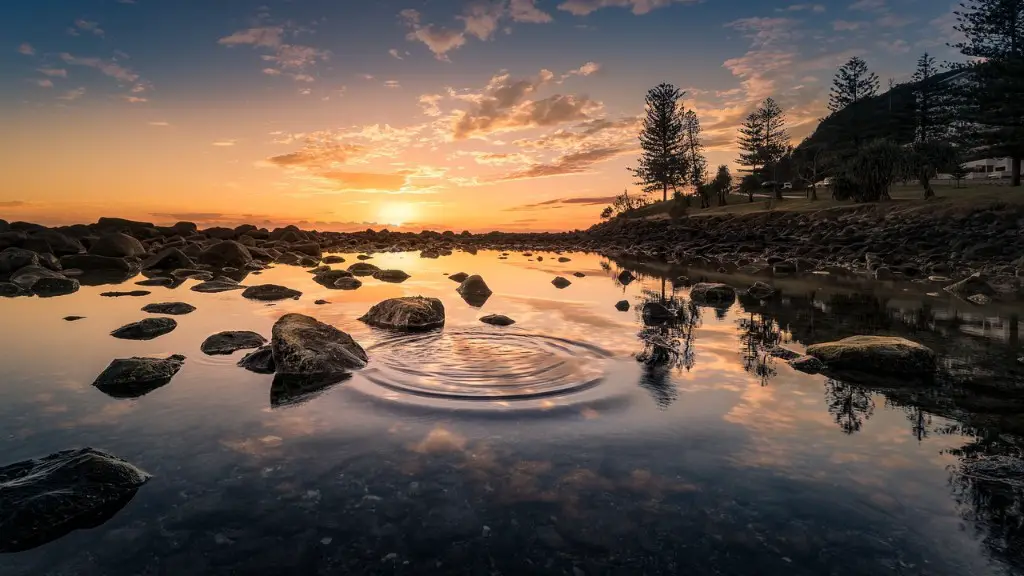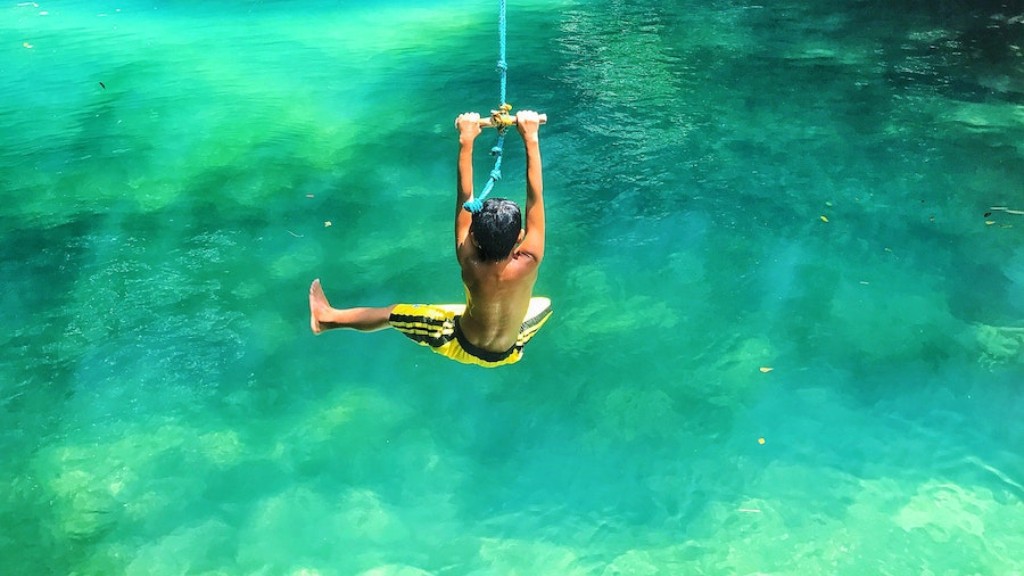Water Pollution Levels
In recent times, researchers have been putting the spotlight on the safety of the waters of Lake Huron due to its reputation as a source of drinking water and its popularity as a tourist destination. There are still a lot of unknowns regarding the water quality in the lake. The health and environmental impacts of swimming in Lake Huron depend largely on its water pollution levels. Pollution can be divided into two categories: point sources (which come from identified sources) and non-point sources (which come from many unidentified sources like run-off, land pollution, and wastewater).
The contaminants present in the Lake Huron water come from a variety of sources, such as agricultural runoff and industrial activities. The pollutants that enter the lake from these sources can harm fish and other wildlife in the lake and contaminate the lake’s drinking water sources. These pollutants can range from chemicals and heavy metals to biologicals like viruses and toxic algae. Additionally, the lake can suffer from nutrient pollution caused by human activities like overfertilizing lawns and discharging untreated wastewater.
One way to measure the water quality of the lake is to look at the water’s Total Maximum Daily Load (TMDL). The TMDL is a measure of the maximum amount of a pollutant that can be present in a water body, such as Lake Huron, without causing long-term environmental damage. The TMDL is determined by summing all of the sources of a particular contaminant in a water body and then subtracting any dilution that occurs due to incoming clean water.
Further to this, the Ontario Ministry of Environment and Climate Change (MOECC) conduct tests of water quality in certain areas of Lake Huron to monitor any potential evidence of contamination. These tests measure the levels of total suspended solids, bacteria, oil and grease, and other pollutants. Based on the results of these tests, verifiable decisions can be taken concerning the safety of the lake and its waters.
Testing the lake waters
The MOECC also allows local communities and resort areas to conduct their own tests of the lake waters and submit them for government review. Private citizens in these areas can test the acidity of their local water source. Other tests that may be conducted by resort and community members include measuring the amount of dissolved oxygen in the water, determining the level of metal contamination, and testing for the presence of any kind of hazardous waste.
These tests are important for maintaining the safety of the lake, as they can help to identify any potential sources of pollution and contaminants that may be present in the waters. Testing the lake waters also allows for better management of the water, as it allows for informed decisions to be taken concerning any potential sources of contamination and the potential need for maintenance.
Additionally, some communities may also adopt strategies such as wastewater filtration systems, public education campaigns, and improved waste management techniques to reduce the amount of pollutants entering the lake. These techniques can help to improve the overall quality of the water as it is essential to ensure that any source of contaminants is kept away from the beautiful beaches that attract so many visitors every year to Lake Huron.
Medical Guidelines
It is important to note that while the Lake Huron water is generally safe to swim in, it is important to abide by medical guidelines when doing so. The American College of Sports Medicine has set forth guidelines that can help people to know when it is not safe to swim in the lake. Symptoms such as tingling, skin irritation or rashes, or even nausea and vomiting are signs that the lake should be avoided. These symptoms can often be attributable to water-borne bacteria and may be an indication that the lake waters are not safe for swimming.
In addition, the Centers for Disease Control and Prevention (CDC) advises swimmers to avoid contact with water if it looks cloudy or murky, if it is surrounded by unmaintained shoreline vegetation or if there is potential sewage contamination. The CDC also recommends avoiding contact with water if there are visible signs of pollutants, such as chemicals, foam, or algae. Further, the Environmental Protection Agency (EPA) recommends avoiding any contact with algae blooms and be aware of any warnings or advisories issued by local health departments or the Environmental Protection Agency.
Further, it is important to use caution when swimming in any body of water, even if no contaminants are present. It is not safe to dive into any unknown body of water or to swim in areas with large amounts of boat traffic. Additionally, no one should ever swim alone and it may be wise to use a life jacket when swimming in a lake, especially if the swimmer is a beginner or young child.
Environmental Measures
Given the environmental importance of Lake Huron, the public and private sectors are taking numerous actions to improve and protect the lake. These range from regulatory measures, such as restrictions on the discharge of pollutants, to non-regulatory measures such as public outreach and education campaigns. The government is also taking steps to better manage and monitor the lake, including the regular testing of water quality, the monitoring of water sources, and the establishment of water-monitoring systems.
Further, citizens can also play an important role in protecting the lake. Local communities can adopt sustainable practices, like reducing fertilizer inputs and using environmentally-friendly cleaning products. Additionally, citizens can get involved in clean-ups and other events to help protect the lake. They can also participate in beach monitoring initiatives such as citizen science projects or lake-monitoring programs to help ensure that the lake is safe to swim in.
Various initiatives have been implemented over the years to protect Lake Huron. Government campaigns and citizen-led initiatives have sought to reduce the amount of pollutants entering the lake and improve its water quality. The Environmental Protection Agency, Ministry of Environment and Climate Change, and other organizations have also sought to monitor the lake and safeguard against any potential sources of contamination in the future.
Sustainable Practices
Apart from direct measures to protect the lake, sustainable practices can also help to reduce contributions of pollutants into the lake. These practices range from the use of natural fertilizers to reduce runoff from agricultural sites, to the proper disposal of hazardous materials to reduce the amount of pollutants entering the lake. Additionally, citizens can also take part in campaigns such as beach clean-ups to help keep the lake free of any pollutants.
The efforts of all citizens, along with the steps taken by government agencies, can help to ensure that Lake Huron remains a safe and healthy place to swim for many years to come. By taking measures to protect the lake environment and adhering to established medical guidelines, everyone can enjoy the lake without worrying about potential health risks.
Initiatives to Address Contamination
Along with the aforementioned efforts, more actions are being taken to directly address the sources of contamination. Some of these include efforts to reduce wastewater discharges, limit run-off from agricultural sources, and improve wastewater treatment processes. Additionally, government agencies are working to develop and implement regulations that are aimed at reducing contamination sources and curtailing the amount of pollutants entering the lake.
Further, citizens can also help to reduce contaminants by adopting practices such as proper disposal of chemicals and other hazardous materials, eliminating the use of plastic items, and avoiding the use of phosphates in cleaning products. Additionally, individuals can also participate in beach clean-ups, or educate themselves on the importance of preserving natural resources.
Various measures and initiatives have been adopted to ensure the safety of Lake Huron and its waters. Governments, citizens, and environmental organizations are working together to ensure that the valued lake is not put in danger by any potential sources of contamination. With continued monitoring and sustainable practices, Lake Huron should remain a safe and enjoyable place to swim for many years to come.




